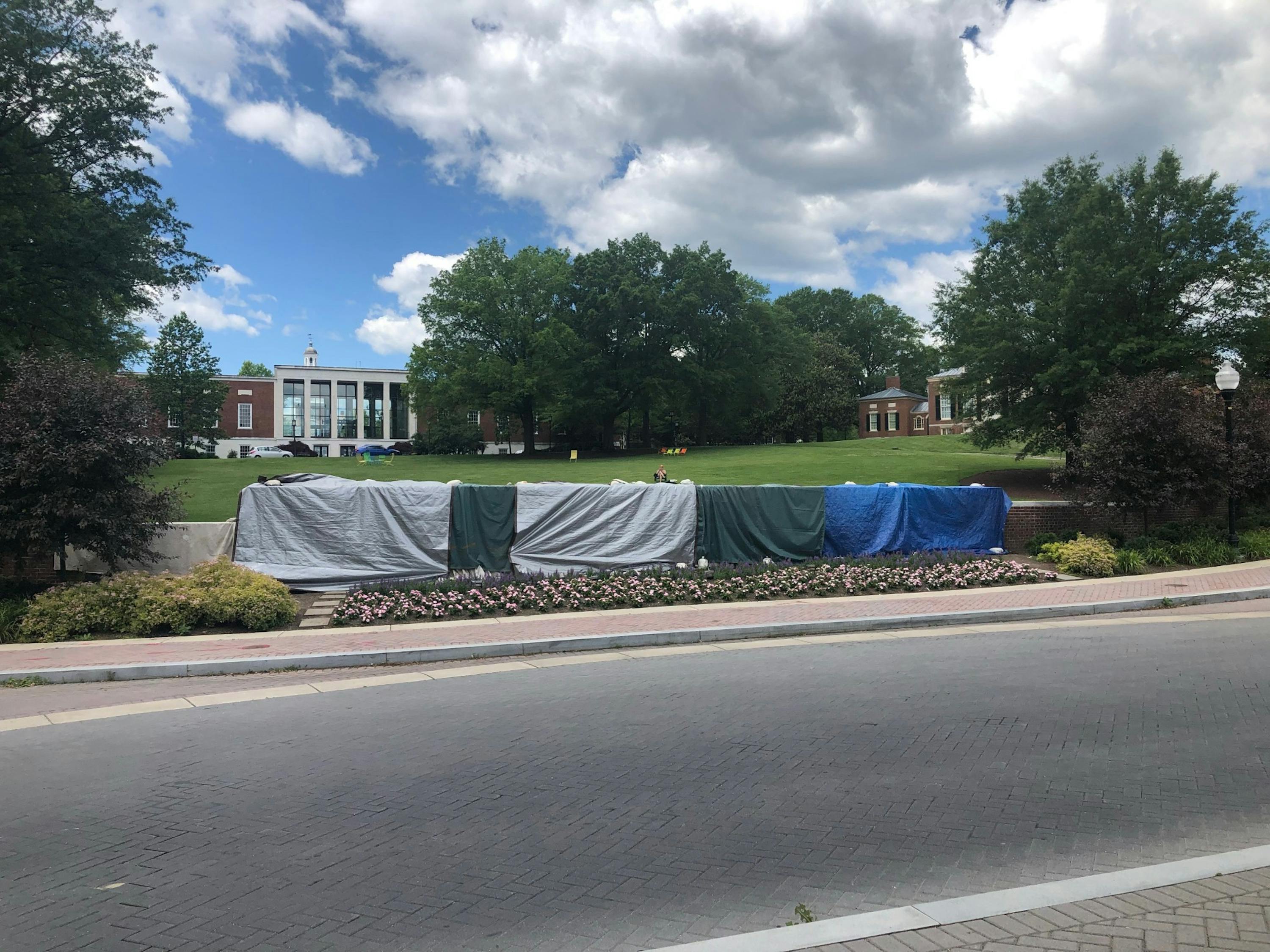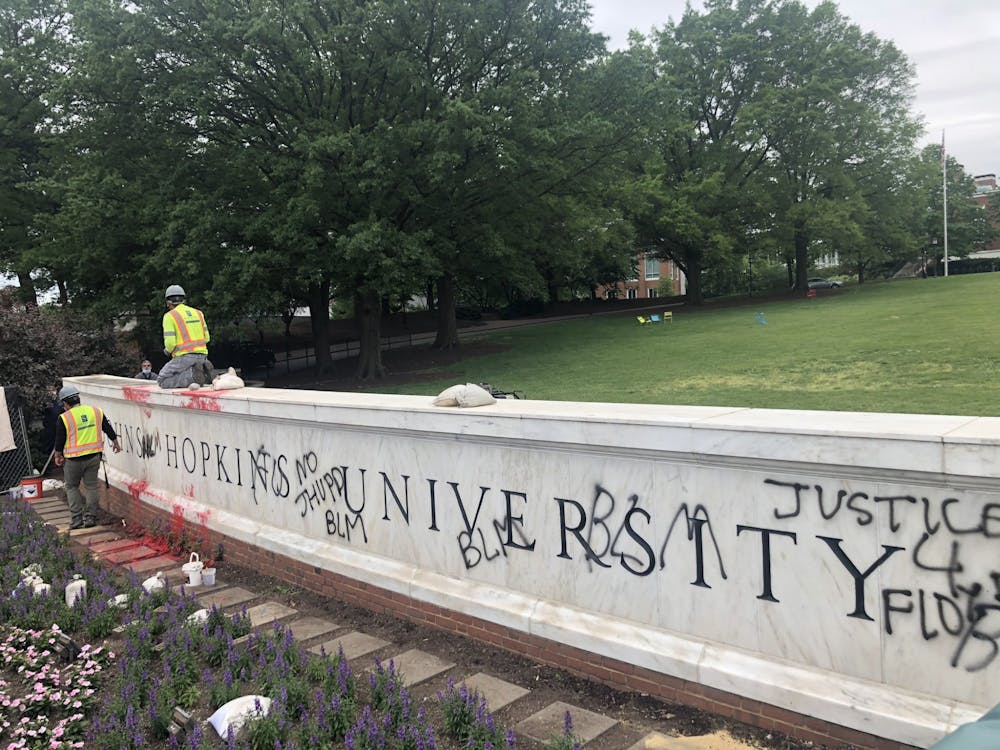The marble sign on the Merrick Gateway and parts of the Mattin Center were spray-painted with messages such as “Justice 4 Floyd” and “No JHUPD” following nationwide protests against police brutality on May 31. The University has since covered the sign with tarp, surrounded it with fences and is in the process of removing the messages.
Ignited by the killing of 46-year-old George Floyd by a white police officer in the Minneapolis Police Department, these protests have spotlighted the Black Lives Matter movement and systemic racial injustice in the U.S. Although many protests have been peaceful, there have been multiple instances of vandalism, looting and arson in major cities.
Rising sophomore Cionne Gates expressed her support for the messages left on the sign in an email to The News-Letter. She emphasized the fact that — despite awareness of racialized police brutality — Hopkins still intends to pursue a private police force on campus (JHPD).
“People, students or not, are outraged due to the progression from this institution that has historically been attended by predominantly white students in which they continue to implement legal authority figures who have no respect for black lives,” she wrote.
Assistant Vice President of External Relations Karen Lancaster explained in an email to The News-Letter why the University covered the Hopkins sign after it had been graffitied.
“It is standard practice to cover vandalism/graffiti on our property until it can be repaired or removed,” she wrote.
Lancaster added that the University is investigating the incident and is receiving information through its anonymous tip line.
“As with any act of vandalism on campus, Campus Safety and Security is working to determine the identity of those involved,” Lancaster wrote. “No positive identifications have been made at this time.”

COURTESY OF GRETA MARAS
Gates, however, explained that graffiti art provides another important avenue of protest.
“Graffiti art is a small act to show that we are here,” Gates wrote. “Despite America’s ignorance for racial prejudice against black lives and people of color, it is a display that our voice, our ideas, and most importantly our lives, matter.”
Recently graduated alum Teagan Kim, who was involved with the Black Church Food Security Network, stated that the graffiti alludes to a greater issue of the role Hopkins plays in Baltimore.
“Community members are fed up with the decades of oppression, displacement and damage that Hopkins has caused to black Baltimoreans,” Kim said. “Hopkins can cover up and clean off their sign, but the decades of harm that the institution has caused cannot be washed away so easily.”
Rising sophomore Raymond Perez voiced his disappointment about the University’s response and stated that Hopkins should support the protesters.
“Hopkins has the duty to stand up for marginalized voices," he said. "It disappoints me that Hopkins would cover up the sign because the graffiti sends an important message that black lives matter.”
He added that, if the individuals who vandalized the sign and the Mattin Center are identified, the University should provide amnesty for them.
“It sets a dangerous precedent if they are going to prosecute or provide disciplinary action to the person who did it,“ Perez said. “In this time in the current climate, it’s important to make sure all voices are heard, and, even if the medium is not what Hopkins would like, we should not silence them, especially via prosecution.”
Some students who attempted to take a picture of the graffitied sign said that they were told by campus security and other Hopkins affiliates that doing so is illegal and that they were trespassing.
Gaige Kerr, a fourth-year PhD student, said that he was approached by a Hopkins affiliate as he was taking a picture of the sign.
“The fences aren’t that tall, so when I stood on my tippy toes I could see over them. I snapped a couple pictures over the fence from the Charles Street sidewalk,” he said. “That’s when security came up to me and said that I’m on private property and had to delete my pictures, which I didn’t do.”
However, Lancaster denied that the University has prevented students from taking pictures of the sign.
“That would not be accurate,” she wrote. “Photos have been taken of the damaged sign. It is not illegal to do so.”
Kerr expressed his confusion over the University’s response which he viewed to be contradictory.
“It is a very strange response by Hopkins to hide this form of dissent and harass passers-by while simultaneously sending out emails in support of [Black Lives Matter], civil discourse and reforms in policing. Hopkins can’t have it both ways,“ he said. “This action by Hopkins ignores that, for many, Hopkins is the oppressor and not an ally.”





